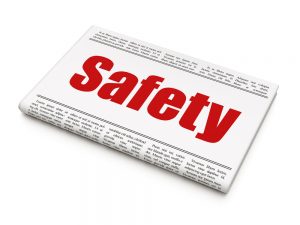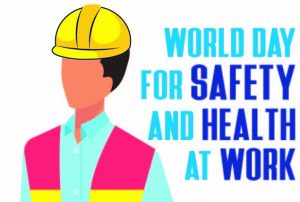
 April 28, 2021
April 28, 2021
World Day for Safety and Health at Work 2021 – Anticipate, prepare and respond to crisis – INVEST NOW IN RESILIENT OSH SYSTEMS
The COVID-19 pandemic has led governments, employers, workers and the general population to face unprecedented challenges in relation to the virus and the many effects it has had on the world of work. The World Day for Safety and Health at Work will focus on strategies to strengthen national occupational safety and health (OSH) systems to build resilience, in order to face crises now and in the future, drawing on lessons learned and experiences from the world of work.
Since emerging as a global crisis in early 2020, the COVID-19 pandemic has had profound impacts everywhere. The pandemic has touched nearly every aspect of the world of work, from the risk of transmission of the virus in workplaces, to occupational safety and health (OSH) risks that have emerged as a result of measures to mitigate the spread of the virus. Shifts to new forms of working arrangements, such as the widespread reliance on teleworking, have, for example, presented many opportunities for workers but also posed potential OSH risks, including psychosocial risks and violence in particular.
The World Day for Safety and Health at Work 2021 focuses on leveraging the elements of an OSH system as set out in the Promotional Framework for Occupational Safety and Health Convention, 2006 (No. 187). The world day report examines how the current crisis demonstrates the importance of strengthening these OSH systems, including occupational health services, at both the national and undertaking level.
The ILO will take this opportunity to raise awareness and stimulate dialogue on the importance of creating and investing in resilient OSH systems, drawing on both regional and country examples in mitigating and preventing the Spread of COVID-19 at the workplace.
The Dangers of Snakes Safety Talk

There are many different kinds of wildlife that can pose a danger to workers in the United States. Different geographical regions deal with different types of wildlife. Snakes, both venomous and non-venomous, can be a major concern for many different workers across the U.S. It is important to consider if snakes could be in your work area and what steps need to be taken to prevent any type of injury or incident due to them.
Snake Bites in the United States
Some countries have many more types of venomous snakes than the U.S. There are still a few kinds of venomous snakes found in the United States including rattlesnakes, copperheads, cottonmouths/water moccasins, and coral snakes. It is estimated that around 7,000 to 8,000 people are bitten by venomous snakes each year in the United States. However, due to effective anti-venom and medical treatment only an average of 5 people die as a result of a bite. Dr. JoAnn Schulte, a medical epidemiologist, states that if anti-venom is needed a hospital bill can easily reach over $100,000 dollars.
While many of the bites by venomous snakes occur off the job and a large number of the people who are bit are children, there are many workers who are at risk for coming into contact with one of these snakes. Any job that is based outside, especially in warmer climates of the U.S., are more at risk to come across one of these snakes.
Other Hazards of Snakes in the Workplace
Obviously not all snakes are venomous and the majority of snakes you will see in your lifetime will be non-venomous. There are still hazards created by these kinds of snakes as well. One of these hazards is the sheer surprise or fear that these creatures can create in people. For example, you are moving sheet metal next to a garage. You pull up the last piece of sheet metal only to find a five foot long black snake inches away from your hand. You jump back, trip over a pipe, and smack your head requiring stitches. Also, some snakes like a black snake have small jagged teeth that can leave lacerations that may need medical attention if bitten.
Safeguards to Protect Yourself from Snakes
- The main way to avoid a bite by a snake is to just leave the snake alone. If removal is necessary contact a professional to remove the snake, especially if it is poisonous.
- Always wear protective toe boots, long pants, and a long shirt when working in areas where snakes are normally found. Clothing will help reduce the impact of a snake’s bite.
- Always do a work area inspection prior to starting work. Look for signs of wildlife in your work area and always be careful when moving materials outdoors where wildlife can live.
